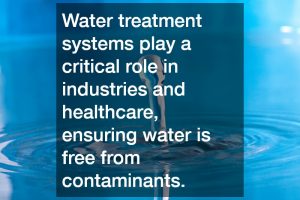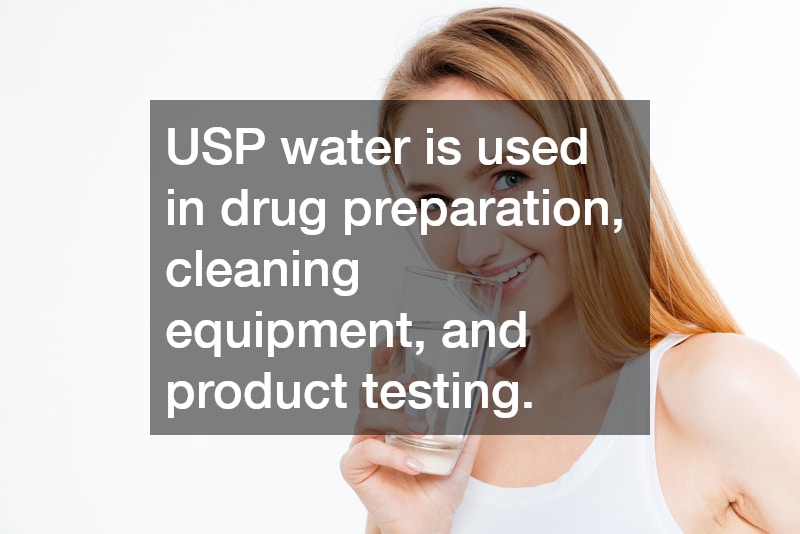The Best Pharmaceutical Practices

Water treatment systems play a critical role in industries and healthcare, ensuring water is free from contaminants. For applications requiring extremely clean water, purified water generation becomes essential. This process involves removing impurities such as minerals, bacteria, and organic matter through methods like reverse osmosis, deionization, and filtration.

A purified water generation system is specifically designed to meet high standards, producing water for specialized industries, including pharmaceuticals and laboratories. These systems often include multiple stages of purification to achieve consistent quality. In the pharmaceutical industry, pharmaceutical purified water systems ensure that the water meets regulatory standards for manufacturing medicines and medical equipment. These systems are designed to be sterile and contamination-free to protect product integrity and patient safety.
One of the most important types of water used in pharmaceutical processes is USP-grade water, which complies with the United States Pharmacopeia standards. USP water is used in drug preparation, cleaning equipment, and product testing. The strict requirements for USP water include the absence of microbial contaminants and specific conductivity limits. Investing in advanced water treatment systems ensures industries can ensure the production of high-quality, compliant water for their operations, safeguarding both processes and end products.

Managing a pharmaceutical company requires oversight in many areas, including research, product development, facilities management, inventory management, and waste disposal. These companies create more than one kind of waste, so they need to hire pharmaceutical waste disposal services and general waste management. While each aspect of running a pharmaceutical company takes thought and careful planning, proper disposition of pharmaceutical waste containers in a secure disposal site comes under Occupational Safety and Health Administration (OSHA) regulations, so it takes precedence.
Any task a government agency regulates ranks higher than those a company prefers. Staff may want to focus on a comfy break area, but the manager’s priorities must focus on items like how to dispose of supplements and vitamins from their testing lab. Every regulation carries with it compliance paperwork, which government agencies require on an annual, and sometimes monthly, basis.
OSHA and the Food and Drug Administration (FDA) specify nearly every aspect of lab work, product testing, and disposal of test products and tainted or expired pharmaceuticals. These organizations even define the appropriate pharmaceutical waste bins to use. A pharmaceutical startup must adhere to the same regulations as major corporations like Pfizer and Bayer, making it vital to know the requirements and fulfill them from the start.
The American pharmaceutical industry is quite a large one, and prescription drugs are a generous portion of the overall American healthcare industry today. Alone, the United States accounts for around 45% of the world’s global pharmaceutical market, and that market is still growing. Estimates say that it may reach a value of $1.12 trillion by the year 2022, quite an impressive amount. This means that good manufacturing procedure, or GMP, is important to maintain, and the staff at a pharma research lab will be held to high standard for pharmaceutical storage, cold chain delivery, biostorage, and record keeping, among other practices. Sample management and clean room maintenance are also quite important as well as pharmaceutical storage, and all of this may allow a lab to create and distribute high quality products efficiently for their many customers.
Lab Conditions
Pharmaceutical storage involves not only having the proper warehouse space for all of these pharmaceutical products and the delivery trucks to move them around, but also proper record keeping. These items in pharmaceutical storage are quite valuable and may sometimes be stolen either by burglars or dishonest staff members, or some supplies might simply be lost due to accidents and errors. In any case, pharmaceutical storage should involve the careful logging of all materials being stored, such as their quantity, type, when they were put in storage, and which staff members were involved (and of course, simply where they are stored). Record keeping is important for any industry, and this is certainly true of pharma, too. If stock goes missing, the staff may check the current inventory and staff testimonies against the records to determine what might have happened and how to fix the problem. If someone is skimming off the products or if someone made a careless mistake, such incidents may be determined by checking the records.
This record keeping might also be done if customers send complaints about missing, incorrect, late, or poor quality products that they received. Here too, the records may be consulted to determine what went wrong. If a batch of pharma products were poorly made, the manufacturing process may be refined to prevent another such incident, and the manufacturer may reassure the customer that they figured out the problem and will soon implement a solution. These records are also useful for when official inspections are carried out in the lab, and those records may be brought up on demand when the inspection officials want to know the recent work history of that lab. The contents of those records may help determine how good or poor a job that lab is doing.
Keep it Clean
That’s not all. Good pharmaceutical storage means having clean and well-controlled premises, and this is especially true for the actual research work being done in a clean room. As the name suggests, clean rooms have extremely strict standards on the levels of contaminants allowed in the air, on surfaces, and on the researchers and their clothing. Modern air detector and filters make it possible to tightly regulate how many particles are in the air, and how large those particles are. Typical outdoor air may have many particles per cubic meter of air, but clean room air will have under 20 particles or so, and none of those particles may be over a certain size. The humidity may also be strictly controlled, and modern climate control tech allows a margin of error of only 1% for this. Meanwhile, many research labs also have fume hoods that are regularly replaced if they are worn out, and many surveyed labs reported that they were about to replace their fume hoods in the near future. Inspection officials may also note a worn-out or dirty fume hood and suggest that the lab’s staff replace it.
Even the transport trucks used to deliver these pharmaceutical goods may have climate control in them, and some strict standards may be set. Today in the United States, about seven out of every 10 leading pharma products require that their transportation vehicles (often trucks) have temperature control in them. An example may be vaccines, which are ruined in heat. A reefer truck, one which boasts air conditioner units, can be used to keep the vaccines inside at a low temperature. It’s essentially a fridge on wheels.